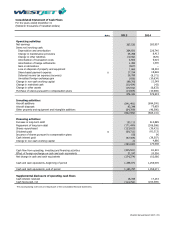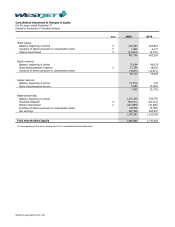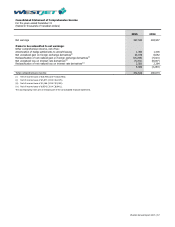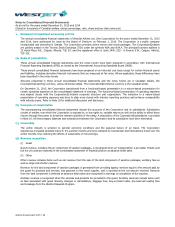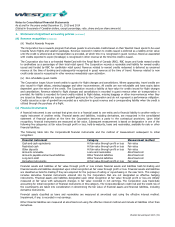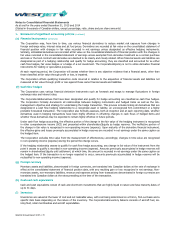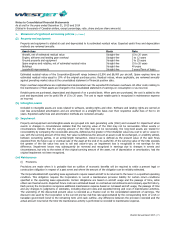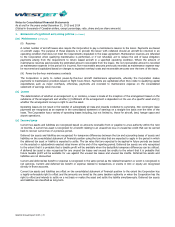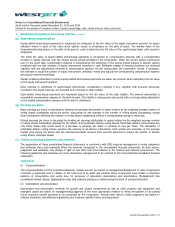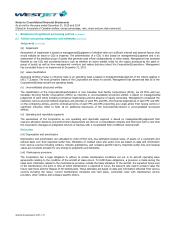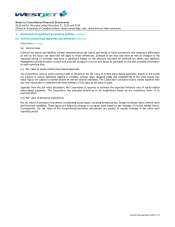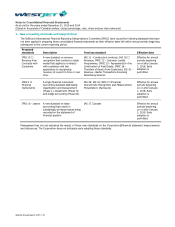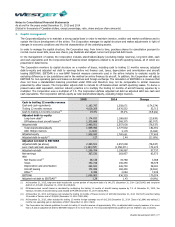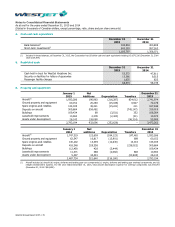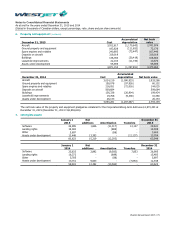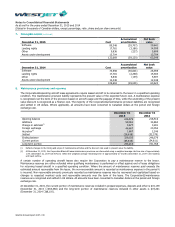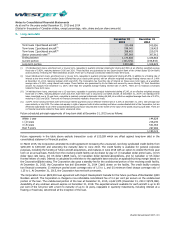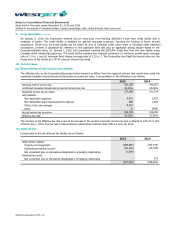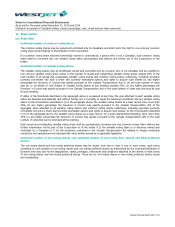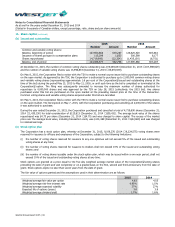Westjet 2015 Annual Report Download - page 77
Download and view the complete annual report
Please find page 77 of the 2015 Westjet annual report below. You can navigate through the pages in the report by either clicking on the pages listed below, or by using the keyword search tool below to find specific information within the annual report.
Notes to Consolidated Financial Statements
As at and for the years ended December 31, 2015 and 2014
(Stated in thousands of Canadian dollars, except percentage, ratio, share and per share amounts)
WestJet Annual Report 2015 | 75
1. Statement of significant accounting policies (continued)
(r) Critical accounting judgments and estimates (continued)
Estimates (continued)
(ix) Income taxes
Deferred tax assets and liabilities contain estimates about the nature and timing of future permanent and temporary differences
as well as the future tax rates that will apply to those differences. Changes in tax laws and rates as well as changes to the
expected timing of reversals may have a significant impact on the amounts recorded for deferred tax assets and liabilities.
Management closely monitors current and potential changes to tax law and bases its estimates on the best available information
at each reporting date.
(x) Fair value of equity-settled share-based payments
The Corporation uses an option pricing model to determine the fair value of certain share-based payments. Inputs to the model
are subject to various estimates relating to volatility, interest rates, dividend yields and expected life of the units issued. Fair
value inputs are subject to market factors as well as internal estimates. The Corporation considers historic trends together with
any new information to determine the best estimate of fair value at the date of grant.
Separate from the fair value calculation, the Corporation is required to estimate the expected forfeiture rate of equity-settled
share-based payments. The Corporation has assessed forfeitures to be insignificant based on the underlying terms of its
payment plans.
(xii) Fair value of derivative instruments
The fair value of derivative instruments is estimated using inputs, including forward prices, foreign exchange rates, interest rates
and historical volatilities. These inputs are subject to change on a regular basis based on the interplay of various market forces.
Consequently, the fair value of the Corporation’s derivative instruments are subject to regular changes in fair value each
reporting period.


